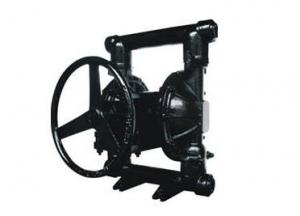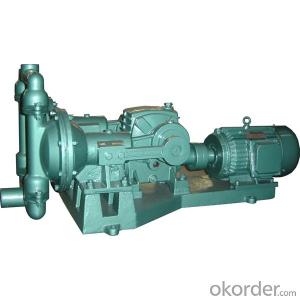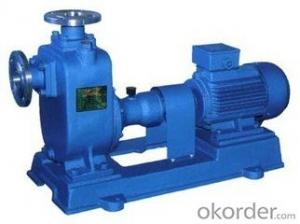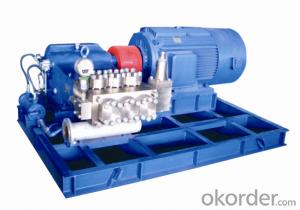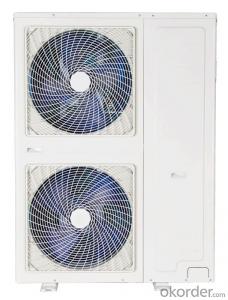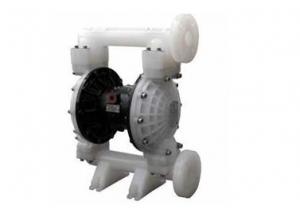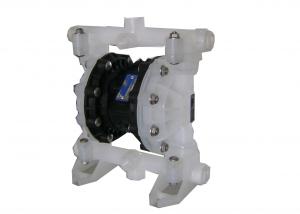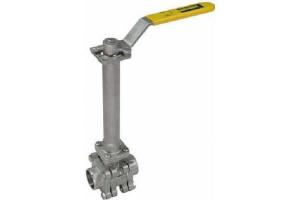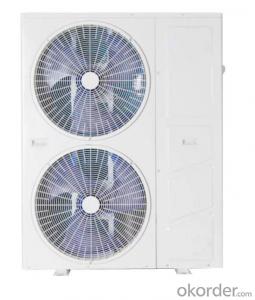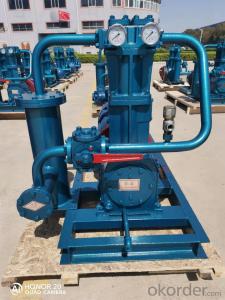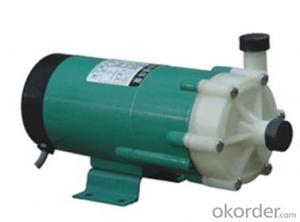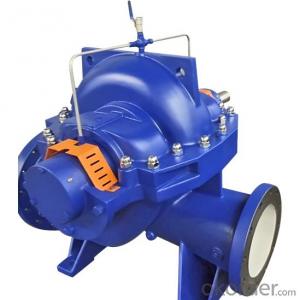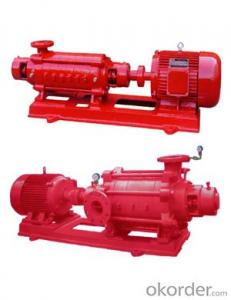Vacuum Pumps 2X Series
- Loading Port:
- China Main Port
- Payment Terms:
- TT OR LC
- Min Order Qty:
- -
- Supply Capability:
- -
OKorder Service Pledge
Quality Product, Order Online Tracking, Timely Delivery
OKorder Financial Service
Credit Rating, Credit Services, Credit Purchasing
You Might Also Like
2X-Series
The type two-stage oil-sealed mechanical pump system varactor vacuum pump, which has the characteristics of the exhaust directly to the atmosphere is suitable for electronics, refrigeration, electric light, chemical, medical, bottle lamps, packaging, dehydrating, drying and other industries. (But can not be used for extraction of oxygen is too high, there are explosive, corrosive to metal on the vacuum oil from the chemical reactions, as well as containing the particles, dust, gas, also can not serve as pumps and compressors use.Motor power:0.37~5.5KW,extract capacity:2~7L/S,Limit vacuum:6×10-1Pa。
Performance Table
Type | off-gas quick result (L/S) | limited pressure (Pa) | mating power (kw) | inner diameter of air inlet (mm) | noise of vent (dB) | total weight (kg) | Shape&size(L×W×H) (mm) |
2X-70 | 70 | 6×10-2 | 5.5 | 80 | ≤86 | 333 | 91×66×70 |
2X-30 | 30 | 6×10-2 | 3 | 65 | ≤80 | 230 | 81×48×57 |
2X-15 | 15 | 6×10-2 | 2.2 | 40 | ≤78 | 202 | 79×53×54 |
2X-8 | 8 | 6×10-2 | 1.1 | 40 | ≤76 | 158 | 79×43×54 |
2X-4 | 4 | 6×10-2 | 0.55 | 25 | ≤75 | 66 | 56×34×40 |
- Q:The car isn't cold enough. Is it related to the air pump?
- Cold air pump is one of the kinds of snow, room temperature, screen, electronic fan, thermostat and so on will affect the refrigeration
- Q:What is the maximum noise level of an air pump?
- The maximum noise level of an air pump can vary depending on the specific make and model. However, in general, the noise level of an air pump is measured in decibels (dB). While there is no specific maximum noise level that applies universally to all air pumps, it is generally recommended to choose a pump that produces a noise level below 60 dB. This is because noise levels above 60 dB can be considered loud and may cause discomfort or disturbance, especially in quieter environments. It is worth noting that some air pumps are designed to operate with minimal noise and may have noise levels as low as 40 dB or even lower. Ultimately, the noise level of an air pump should be considered when selecting a suitable option, especially if the pump will be used in a noise-sensitive area or if a quiet environment is desired.
- Q:What are the different noise reduction techniques in air pumps?
- There are several noise reduction techniques commonly used in air pumps to minimize noise levels and provide a quieter operating environment. Some of these techniques include: 1. Sound insulation: Air pumps often have enclosures or casings made of materials with sound-absorbing properties, such as foam or rubber, to absorb and dampen noise vibrations. 2. Vibration isolation: By using rubber mounts or isolators, air pumps can reduce vibrations transmitted to the surrounding structures, minimizing noise generation. 3. Anti-vibration pads: Placing anti-vibration pads beneath the air pump helps to absorb and dampen vibrations, reducing noise levels. 4. Silencers or mufflers: These devices are specifically designed to attenuate noise by creating additional airflow resistance. They are often installed at the exhaust or intake ports of the air pump to reduce the noise generated during operation. 5. Noise reduction fans: Air pumps may employ specially designed fans with noise reduction features, such as low-noise blades or advanced fan blade shapes that reduce turbulence and resulting noise. 6. Acoustic barriers: These barriers are placed around the air pump to block and absorb sound waves, preventing noise from escaping into the surrounding environment. 7. Duct silencers: When air pumps are connected to ductwork, adding duct silencers can significantly reduce noise levels by absorbing and attenuating noise within the duct system. 8. Motor enclosures: Air pumps may utilize motor enclosures made from sound-absorbing materials to reduce noise transmission from the motor to the surrounding environment. Overall, these noise reduction techniques in air pumps aim to minimize vibrations, attenuate sound waves, and create a more pleasant and quieter operating environment.
- Q:What is the average noise level of an air pump during operation?
- The noise level of an air pump can differ based on its type and model. Generally, air pumps made for aquariums or inflatable products typically generate noise levels ranging from 30 to 60 decibels (dB) when operating at a regular speed. To give you an idea, 30 dB is comparable to a whisper or a quiet library, while 60 dB is similar to a normal conversation or background music. It's worth noting that larger and more powerful air pumps, such as those used in high-performance or industrial settings, may produce louder noise levels. Nonetheless, many manufacturers make efforts to create air pumps with noise-reducing features to offer a quieter and more comfortable experience for users.
- Q:Can an air pump be used for inflating air loungers with cup holders?
- Indeed, air loungers with cup holders can be inflated using an air pump. This handy device proves to be quite efficient in rapidly inflating a variety of inflatable items, including air loungers. Usually, air loungers with cup holders come equipped with valves that seamlessly connect to an air pump. By employing the air pump, one can effortlessly achieve the desired level of firmness in the air lounger, enabling a pleasant and relaxing experience while keeping their preferred beverage conveniently nearby.
- Q:What are the environmental impacts of air pumps?
- Air pumps, like any other electrical devices, do have certain environmental impacts. One of the key impacts is the carbon emissions associated with their energy consumption. Air pumps typically require electricity to operate, and this electricity is often generated by burning fossil fuels, such as coal or natural gas. The combustion of these fossil fuels releases carbon dioxide and other greenhouse gases into the atmosphere, contributing to climate change. Additionally, the production and disposal of air pumps can also have environmental consequences. The manufacturing process involves the extraction of raw materials, such as metals, plastics, and electronic components, which can contribute to habitat destruction and pollution. Furthermore, the disposal of air pumps at the end of their life cycle can result in electronic waste, which contains hazardous materials that can leach into the environment if not properly managed. However, it is important to note that the environmental impacts of air pumps can be mitigated to some extent. For example, using energy-efficient models can reduce their carbon footprint by reducing electricity consumption. Additionally, properly recycling or disposing of old or broken air pumps can help minimize their impact on the environment. In conclusion, while air pumps do have certain environmental impacts, adopting measures to reduce energy consumption, properly manage electronic waste, and promote sustainable manufacturing practices can help minimize their negative effects on the environment.
- Q:Can an air pump be used for inflating camping gear like sleeping pads or tents?
- Certainly, camping gear like sleeping pads or tents can absolutely be inflated using an air pump. In reality, it is a highly suggested approach since it saves both time and effort when compared to manually blowing air into the gear. In the market, there are air pumps specifically designed for this purpose, equipped with different nozzles to suit various camping gear valves. These pumps can be operated either manually or powered by electricity or batteries. Utilizing an air pump guarantees a speedy and effective inflation process, enabling you to set up your camping gear swiftly and relish a comfortable outdoor experience.
- Q:When the air pump starts, it seems that there is not enough strength, so the rhythm is very slow, and then it does not turn. It seems to be the owner of the card. That's the case. Thank you very much for the help of experienced people..
- Check that the drive shaft is in good condition.
- Q:Are there any health risks associated with using an air pump?
- There are generally no significant health risks associated with using an air pump. However, prolonged exposure to high levels of noise produced by certain air pumps may pose a risk of hearing damage. Additionally, if the air pump is not properly maintained or if the air quality in the environment is poor, there may be a risk of inhaling contaminants. Therefore, it is important to use air pumps in well-ventilated areas and regularly clean and maintain them to minimize any potential health risks.
- Q:Can an air pump be used for inflatable water parks or play structures?
- Yes, an air pump can be used for inflatable water parks or play structures. In fact, it is highly recommended to use an air pump for inflating these types of structures. An air pump is designed to quickly and efficiently inflate large inflatable objects, such as water parks or play structures, saving both time and effort. Using an air pump ensures that the structures are properly inflated to their recommended pressure, which enhances their stability and safety for users. Additionally, an air pump can also be used to deflate the structures after use, making the process of setting up and packing away much easier. Overall, an air pump is an essential tool for inflating and deflating inflatable water parks or play structures.
1. Manufacturer Overview |
|
|---|---|
| Location | |
| Year Established | |
| Annual Output Value | |
| Main Markets | |
| Company Certifications | |
2. Manufacturer Certificates |
|
|---|---|
| a) Certification Name | |
| Range | |
| Reference | |
| Validity Period | |
3. Manufacturer Capability |
|
|---|---|
| a)Trade Capacity | |
| Nearest Port | |
| Export Percentage | |
| No.of Employees in Trade Department | |
| Language Spoken: | |
| b)Factory Information | |
| Factory Size: | |
| No. of Production Lines | |
| Contract Manufacturing | |
| Product Price Range | |
Send your message to us
Vacuum Pumps 2X Series
- Loading Port:
- China Main Port
- Payment Terms:
- TT OR LC
- Min Order Qty:
- -
- Supply Capability:
- -
OKorder Service Pledge
Quality Product, Order Online Tracking, Timely Delivery
OKorder Financial Service
Credit Rating, Credit Services, Credit Purchasing
Similar products
New products
Hot products
Related keywords


